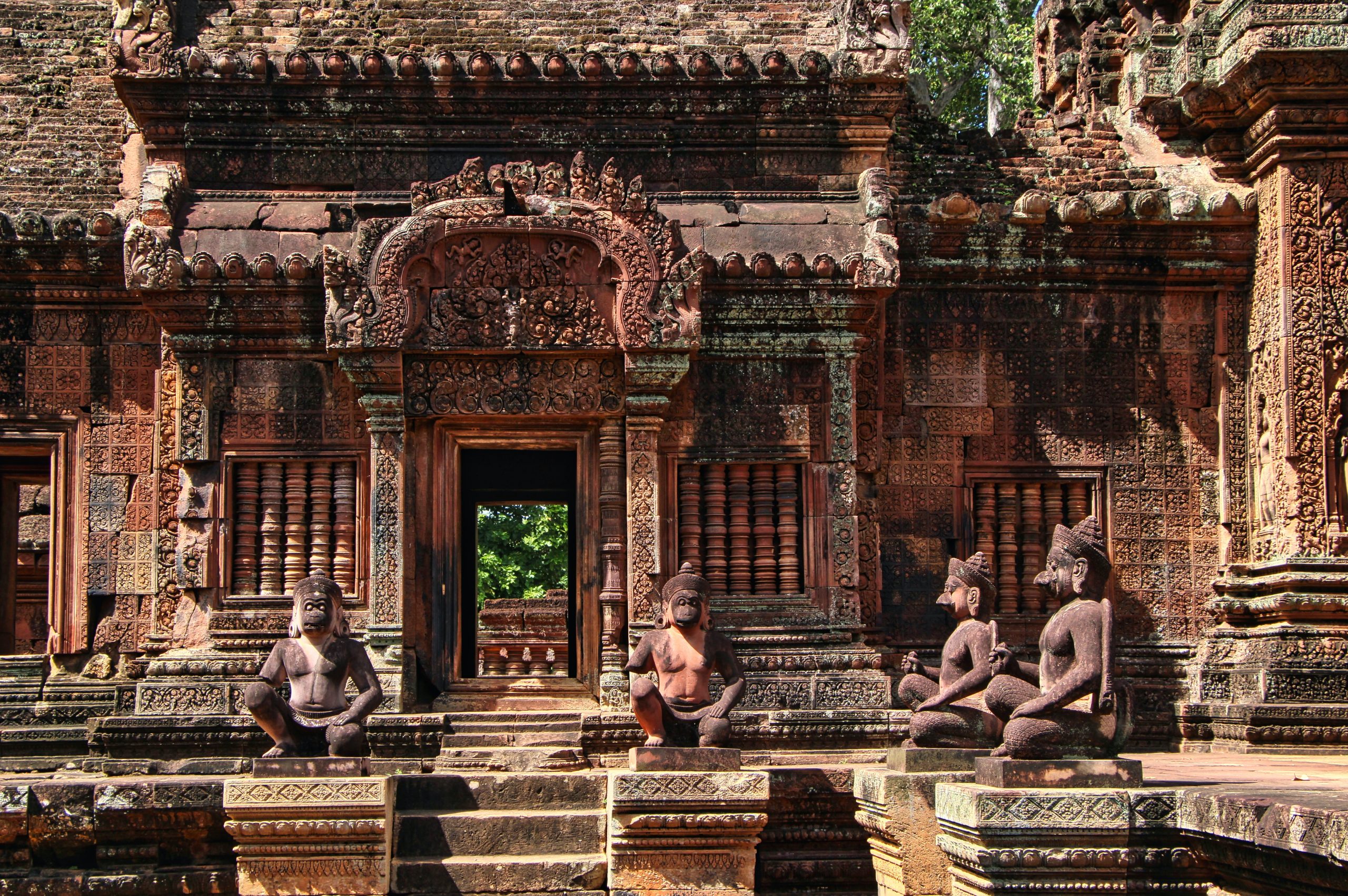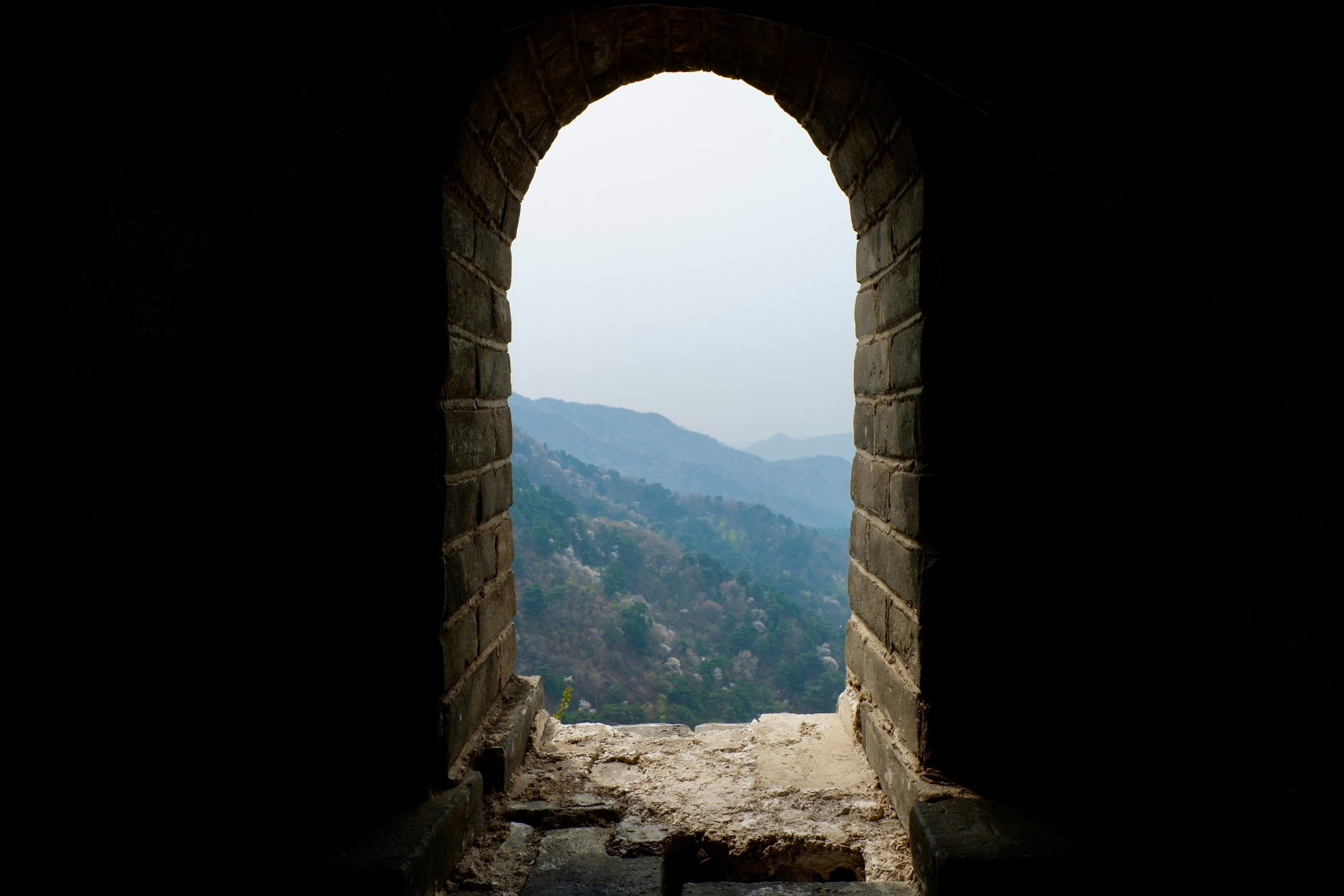Exploring the Mystique of Khmer Architecture at Angkor
When it comes to architectural wonders, few places on Earth can rival the sheer magnificence of Angkor in Cambodia. Nestled amidst lush jungles and ancient ruins, the temples of Angkor stand as a testament to the creative genius of the Khmer civilization. Join Green Sun Travel on a virtual journey as we unravel the rich history and captivating Khmer architecture at Angkor, a UNESCO World Heritage site that’s a must-visit for any travel enthusiast.
The signature of Khmer architecture at Angkor
The signature of Khmer architecture at Angkor can be summarized in several distinctive features that make it unique and instantly recognizable:
Temples Dedicated to Hindu and Buddhist Deities: Khmer architecture in Angkor primarily comprises temples dedicated to Hindu and Buddhist deities. These temples are often characterized by their central towering spires and intricate stone carvings depicting scenes from Hindu epics like the Ramayana and the Mahabharata.
Angkor Wat: The Epitome of Symmetry: Angkor Wat, the most iconic temple in Angkor, perfectly exemplifies the Khmer architectural signature. It is renowned for its symmetrical design, with a central temple mountain surrounded by a moat and concentric galleries. The five central towers symbolize Mount Meru, the abode of the gods.
Baray Reservoirs and Causeways: Many Khmer temples are accompanied by extensive baray reservoirs, used for water management and symbolic purposes. Long causeways, flanked by intricate stone balustrades and guardian figures, lead to the temple entrances.
Intricate Bas-Reliefs: Khmer architecture is celebrated for its intricate bas-reliefs that adorn temple walls. These carvings depict not only religious stories but also scenes from daily life, battles, and mythological creatures. The level of detail and artistry in these carvings is unparalleled.
Gopuras and Sanctuaries: Gopuras are ornate entrance pavilions, featuring multiple towers and richly decorated facades. The sanctuaries within the temples house statues of deities and are often topped with lotus-bud finials.
Naga Balustrades and Guardian Figures: Naga, the mythical serpent, is a recurring motif in Khmer architecture. Naga balustrades, guardian figures, and serpentine railings are common features along temple entrances, symbolizing protection and spirituality.

Laterite and Sandstone Construction: Khmer temples are typically constructed using laterite and sandstone. Laterite is used for the foundation and outer walls, while sandstone is reserved for the intricate carvings and detailing. The contrast between the two materials adds to the temples’ visual appeal.
Integration with Nature: Khmer architecture at Angkor often seems to merge seamlessly with the surrounding natural environment. Tree roots from giant fig trees and silk-cotton trees intertwine with temple walls, creating a striking juxtaposition of man-made and natural elements.
Alignment with Cosmic Principles: Khmer architecture is deeply rooted in a cosmic worldview, where temple layouts and orientations are meticulously planned to align with celestial and spiritual principles. This attention to cosmic alignment contributes to the temples’ profound symbolism.
Ongoing Restoration and Preservation: The commitment to preserving and restoring Khmer architecture is a distinctive feature in itself. Ongoing efforts, supported by organizations like UNESCO, ensure that these architectural wonders remain accessible for future generations.
The signature of Khmer architecture at Angkor is a blend of spiritual devotion, artistic mastery, and a deep connection to the natural world. It’s a testament to the rich history and cultural legacy of the Khmer civilization that continues to captivate and inspire visitors from around the globe.
The Khmer Empire’s Legacy
The story of Angkor is deeply intertwined with the legacy of the Khmer Empire, which reigned over Southeast Asia from the 9th to the 15th century. During this time, the Khmer civilization displayed remarkable architectural prowess, leaving a lasting imprint on the region’s cultural heritage. The empire’s most vivid and iconic expression of this architectural brilliance is found in the stunning temples of Angkor.
Angkor Wat: At the heart of this empire’s architectural legacy stands Angkor Wat, a true masterpiece. This sprawling temple complex, built in the early 12th century, is dedicated to the Hindu god Vishnu. Angkor Wat’s unique blend of symmetry and intricacy sets it apart as a crowning achievement of Khmer architecture. Its towering central spire pierces the sky, while the reflection pool at its front enhances the sense of grandeur. This image, often reflected in the still waters, has become an enduring symbol of Cambodia and its rich history.
Beyond Angkor Wat: Hidden Gems
While Angkor Wat may be the most famous temple within the Angkor complex, it is only the tip of the iceberg when it comes to the treasures of Khmer architecture. Angkor boasts several lesser-known yet equally awe-inspiring temples, each with its own unique story and architectural style.
Ta Prohm: One of the hidden gems, Ta Prohm, has gained fame for its remarkable integration with the surrounding jungle. Massive tree roots from giant fig trees have intertwined with the temple’s stones over centuries. This natural invasion of the temple creates a haunting and captivating atmosphere, as nature reclaims the man-made structure. Ta Prohm is a testament to the inexorable passage of time and the enduring power of nature.
Bayon Temple: Bayon Temple is another exceptional example of Khmer architecture, known for its enigmatic stone faces. As you explore its labyrinthine corridors, you’ll encounter countless serene and smiling faces, seemingly watching you from all directions. These stone visages are believed to depict Avalokiteshvara, a bodhisattva associated with compassion, adding a layer of mystique to the temple.
The Symbolism in Stone

One of the most fascinating aspects of Khmer architecture at Angkor is its deep spiritual and symbolic significance. Each temple tells a story, and the bas-reliefs that adorn their walls narrate epics, myths, and the lives of gods, demons, and humans. For example, Angkor Wat’s bas-reliefs recount the Hindu epic, the Ramayana. As you trace your fingers along these stone-carved tales, you can’t help but be moved by the depth of Khmer craftsmanship and devotion, and the stories that have been etched into stone for centuries.
Preservation and Restoration
The temples of Angkor have not endured the ravages of time without their fair share of challenges. Over the centuries, nature and the elements have taken their toll on these architectural wonders. However, extensive restoration efforts, supported by UNESCO and dedicated local teams, have breathed new life into these ancient structures. As a visitor, you’ll witness a remarkable blend of ancient grandeur and modern conservation, ensuring that the legacy of Khmer architecture endures for generations to come.
Practical Tips for Your Visit
When planning your visit to Angkor, here are some practical tips to enhance your experience:
- Best Time to Visit: The cooler, dry season from November to February is the ideal time for exploring Angkor, as it offers comfortable weather conditions for exploration.
- Ticket Information: Tickets are available for single or multi-day visits, with different options catering to various interests, from a quick tour to an in-depth exploration.
- Local Guides: Consider hiring a knowledgeable local guide to gain deeper insights into the history, symbolism, and hidden stories behind the temples, enriching your understanding of this remarkable cultural heritage.
- Respectful Attire: Show respect for the sacredness of the temples by wearing modest clothing that covers your shoulders and knees.
- Stay Hydrated: Cambodia’s tropical climate can be humid and hot, so remember to stay hydrated during your exploration to ensure a comfortable and enjoyable visit.
Conclusion
In conclusion, the Khmer Empire’s legacy, epitomized by the temples of Angkor, is a testament to the remarkable artistic, spiritual, and historical achievements of the Khmer civilization. The rich tapestry of Khmer architecture at Angkor, from the iconic Angkor Wat to the hidden gems like Ta Prohm and Bayon, offers visitors a chance to step back in time, immerse themselves in intricate stone carvings, and discover the profound symbolism etched into the very soul of these awe-inspiring structures.








Health Stay
naturally like your web site however you need to take a look at the spelling on several of your posts. A number of them are rife with spelling problems and I find it very bothersome to tell the truth on the other hand I will surely come again again.
February 29, 2024 at 10:52 am
Bonus d'inscription Binance
Can you be more specific about the content of your article? After reading it, I still have some doubts. Hope you can help me.
April 6, 2024 at 9:27 pm